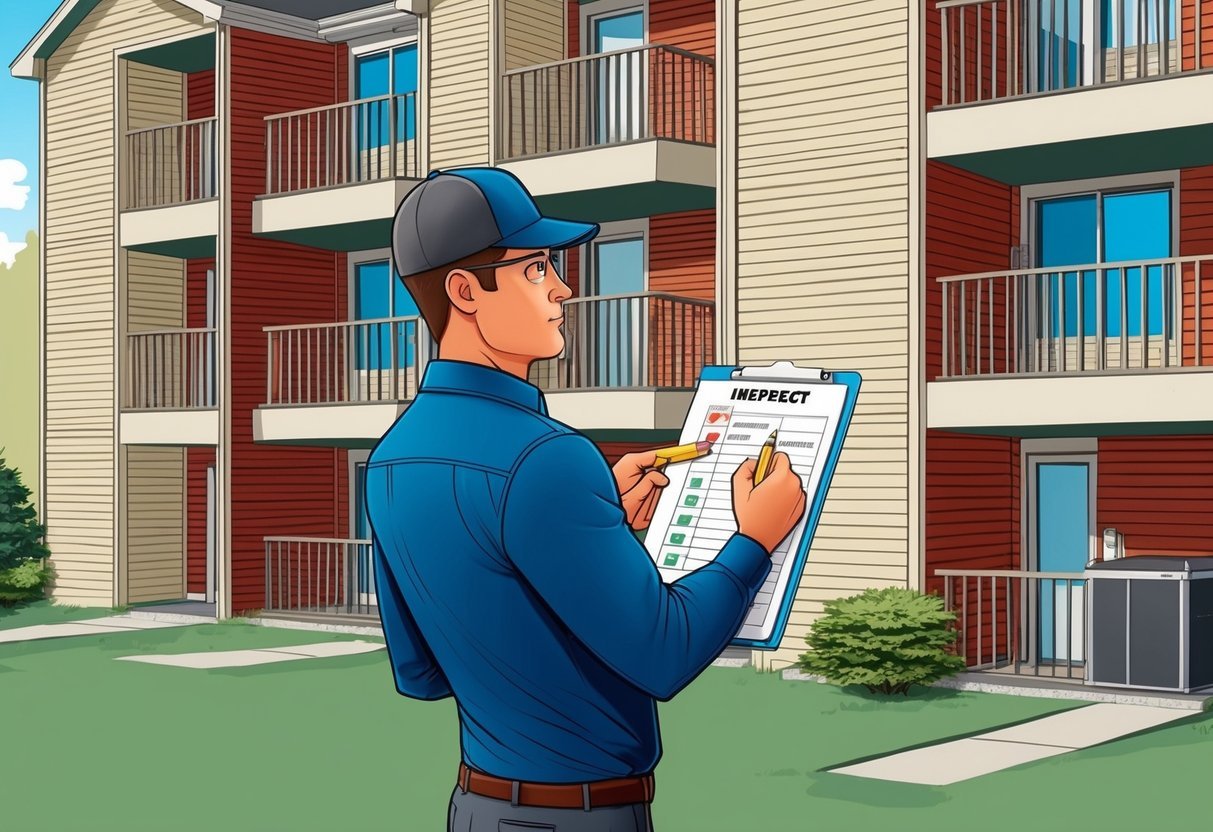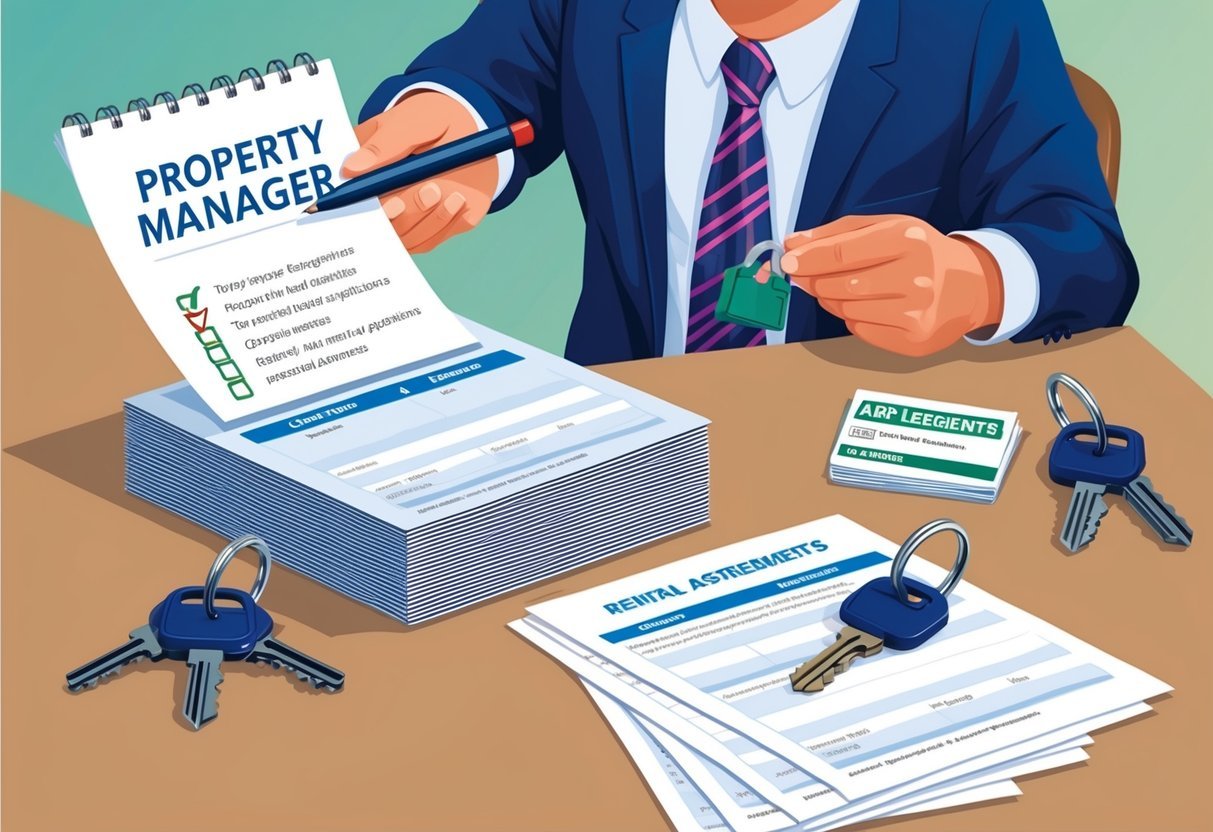Managing multiple rental properties can be intricate and demanding.
Handling several properties simultaneously often requires a strategic approach to effectively maintain operations, ensure tenant satisfaction, and safeguard investment returns.

Navigating the real estate landscape with efficiency and foresight is essential for success in property management. As we explore practical tips to streamline property oversight, our goal is to equip real estate investors with the knowledge and tools needed to enhance their management capabilities and maximize potential profits.
1) Maintain Accurate Records
In managing multiple rental properties, maintaining accurate records is essential to ensure smooth operations and financial health.
We should categorize income, expenses, and maintenance costs for each property separately.
Doing so not only helps in tax preparations but also offers clear insights into each property’s profitability.
Implementing a property management software or accounting tool can significantly streamline this process.
These tools allow us to track rent payments, document expenses, and manage cash flow efficiently.
Storing documents digitally reduces the risk of loss and makes finding records much easier when needed.
Keeping personal finances separate from rental property finances is crucial.
By creating distinct accounts for each property, we avoid mingling personal and business transactions, which simplifies financial reporting.
This structure provides a more transparent view of our rental property’s financial position.
Regularly updating records is vital.
As transactions occur, capturing them promptly ensures that our records remain current.
This real-time information assists in making informed decisions and identifying potential issues with the properties quickly.
Proper documentation includes not just financial transactions, but also leases, contracts, and maintenance records.
Organizing these documents well enhances our ability to respond to tenant inquiries and legal matters.
An organized system ensures all records are easily accessible whenever required.
2) Utilize Property Management Software
In managing multiple rental properties, property management software is essential.
Such software helps streamline processes like rent collection, tenant communication, and maintenance requests.
By integrating these tasks, we can efficiently manage and track property-related activities.
This ensures we address issues promptly and maintain good relationships with tenants.
The ability to access real-time data on rental units enhances decision-making.
We can quickly view vacancies, pending repairs, and financial reports from anywhere.
Some software offers mobile accessibility, enabling us to manage properties on the go.
This flexibility ensures we stay connected, even when away from the office.
Choosing software with a user-friendly interface makes managing properties more intuitive and less time-consuming.
This ease of use reduces the likelihood of human error, bolstering efficiency.
Integrating software across our portfolio helps automate routine tasks.
Automation frees up our time, allowing us to focus on strategic property management goals.
Additionally, having centralized information simplifies tracking income and expenses.
This ensures we maintain financial clarity, which is critical for successful property management.
3) Conduct Regular Inspections

Conducting inspections is crucial in maintaining the value and condition of our rental properties.
Regular checks allow us to identify potential issues early, preventing more significant problems and expenses later.
Before a new tenant moves in, a thorough inspection helps document the property’s current condition.
This not only sets the baseline but also aids in resolving any disputes about damages that may arise.
Inspections during a tenant’s lease term are equally important.
These visits ensure that tenants are adhering to lease agreements and maintaining the property well.
When a tenant prepares to move out, we perform a comprehensive check again.
This inspection details any damage caused during the tenancy and identifies necessary repairs.
We also consider spot checks or interim inspections to proactively manage any ongoing issues.
This can be particularly useful in high-turnover properties.
Using modern tools and technology greatly aids our inspection process.
Digital checklists and platforms allow us to document repairs, track property conditions, and communicate effectively with tenants.
Establishing a routine schedule for these inspections helps us stay organized, ensuring each property is safe and up to standard.
Keeping clear records of all inspections is a good practice.
4) Screen Tenants Thoroughly

To effectively manage multiple rental properties, we must ensure we select the right tenants.
This begins with a comprehensive screening process to minimize potential issues down the line.
Checking an applicant’s financial health is crucial.
By evaluating credit reports, we can gain insights into their past financial behavior and reliability.
A background check complements this by revealing any past legal or criminal issues that might impact their suitability.
It’s important to verify employment and income.
Confirming that potential tenants have a stable income ensures they can meet rental payments consistently.
Contacting previous landlords can also provide valuable perspectives on the tenant’s history and conduct.
We should not overlook reference checks.
Speaking with personal references can offer a more rounded view of the applicant’s character and dependability.
Including these steps in our screening process helps us find tenants who will respect our properties and fulfill their lease agreements responsibly.
The cost of conducting detailed screenings can vary.
Some tenants may cover these expenses, ensuring that we do not have to bear the financial burden.
Ultimately, investing time in thorough tenant screening can protect our interests and maintain peaceful, well-maintained rental properties.
5) Be Proactive with Maintenance

As property managers, staying on top of maintenance is crucial to ensuring the long-term success of our rental properties.
Regular inspections of each unit help identify potential issues before they escalate.
By addressing these problems early, we prevent costly repairs and keep tenants satisfied.
Establishing a routine maintenance schedule is essential.
This includes seasonal tasks like inspecting heating systems in the fall or checking air conditioning units each spring.
Scheduling regular updates for plumbing and electrical systems minimizes the chance of unexpected failures.
Building a network of trusted contractors and vendors is invaluable.
Working with reliable professionals allows us to respond quickly to maintenance requests.
This network can also ensure repairs are completed efficiently and correctly, saving both time and resources.
We should also encourage tenants to report maintenance issues promptly.
Clear communication channels, such as an online portal, can make it easier for tenants to submit requests.
Responding swiftly to these reports helps maintain trust and keeps tenants happy.
Emergency Repairs
Emergency repairs require swift action to address sudden issues that could affect tenant safety or property integrity.
Our properties should have a list of trusted contractors for situations like plumbing leaks or major heating system malfunctions.
Preparing for emergencies involves creating an emergency response plan.
This plan includes clearly defined steps for residents to follow when emergencies arise, such as who to contact and how.
Investing in a dedicated hotline can expedite communication.
Keeping tenants informed and maintaining open lines of communication during emergencies reassures them and helps mitigate potential damage.
By being proactive and prepared, we can handle emergencies effectively, thereby minimizing stress for both us and our tenants.
Frequently Asked Questions

In managing multiple rental properties, we focus on using technology effectively, adhering to best practices for short-term rentals, and understanding investment rules like the “2 percent rule.” By following proven strategies, landlords can enhance their management efficiency and profitability.
What are the most effective strategies for managing multiple rental properties?
Efficient property management involves keeping accurate records and utilizing management software.
Regular inspections and proactive maintenance help maintain property value.
Thorough tenant screening ensures reliable rental payments and fewer issues.
How can property management software streamline the management of several properties?
Property management software centralizes data, making it easier to track rent payments, manage expenses, and communicate with tenants.
This can significantly reduce the time spent on administrative tasks and improve overall efficiency.
What are the best practices for handling multiple short-term rental properties?
For short-term rentals, maintaining cleanliness and timely check-in/check-out processes is crucial.
Implementing a dynamic pricing strategy can optimize revenue based on demand.
Regularly updating listings on platforms ensures high visibility and occupancy rates.
Can you explain the ‘2 percent rule’ in the context of rental property investments?
The ‘2 percent rule’ suggests that a property is a good investment if the monthly rent equals at least 2 percent of the purchase price.
This guide helps investors assess potential cash flow and ensures they consider profitability before acquiring new properties.
What methods do successful landlords use to oversee multiple rental units?
Successful landlords build strong relationships with reliable contractors for maintenance and repairs.
They also leverage technology for efficiency and set clear lease agreements to minimize disputes.
Effective communication with tenants can prevent misunderstandings and enhance tenant satisfaction.
What tactics can landlords use to increase the profitability of their rental properties?
To reduce vacancy rates, landlords can use competitive pricing.
Renovations and improvements can also justify higher rent.
Additionally, they should regularly review and adjust rent in line with market trends to ensure that properties maintain strong returns.

